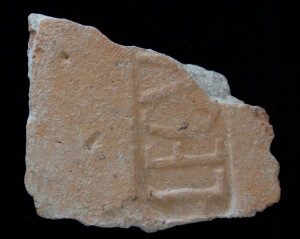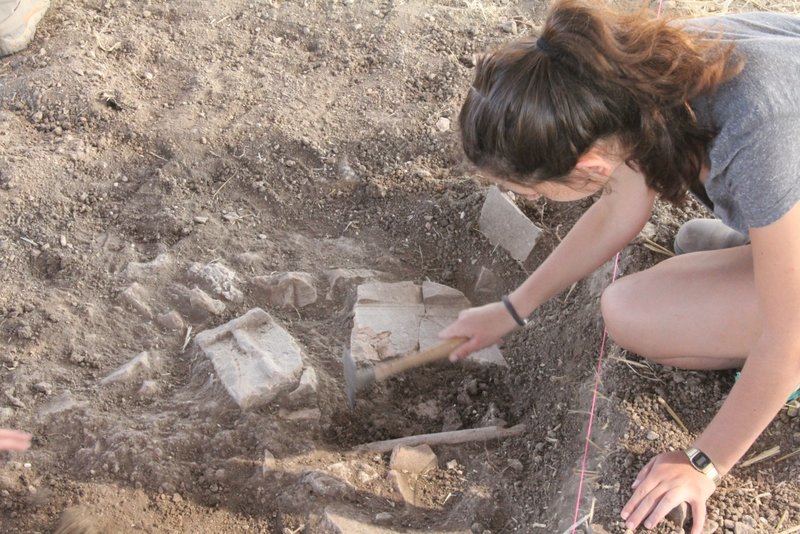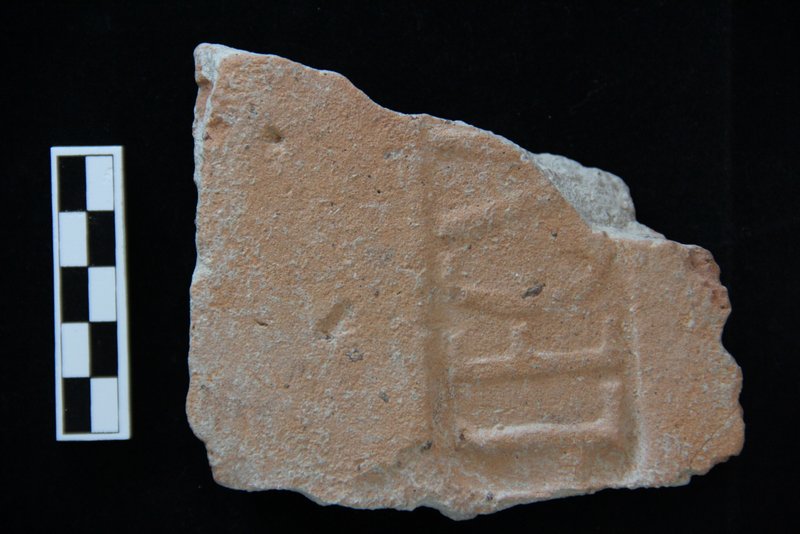
Other than agriculture, very little can be seen in the field of el-Manach. It is quiet and flat, the soil clearly worked as any farmer’s field would be in this part of Israel. But beneath its surface lie the material vestiges of what at one time, about 1800 years ago, was a major encampment of Roman soldiers. MAJOR is the operative word, because this encampment constituted the military headquarters of the Legio VI Ferrata, or the Roman Sixth Legion, which, during its time, secured Rome’s hold of northern regions of the province of Syria-Palaestina with its strategic location near important imperial roads.
Since Byzantine times, the exact location of the military base was a mystery to historians. But in the early 20th century American engineer, architect and archaeologist Gottlieb Schumacher observed the remains of Roman architecture in the area of ancient Megiddo, and in the 1990’s during a survey Israeli archaeologist Yotam Tepper of the Israel Antiquities Authority identified Roman remains, including coins and roof tiles stamped with the name of the Roman Sixth Legion, concentrated in and around the el-Manach agricultural field.
But real validation didn’t come until 2010, when Tepper began focused archaeological investigations at el-Manach using a variety of remote sensing techniques. This, along with data acquired through preliminary archaeological and historical work, led to the first full-scale excavation at el-Manach in 2013, employing a team of archaeologists, American and European students, and participants from local youth and community groups under co-directors Tepper and Matthew J. Adams of the W.F. Albright Institute of Archaeological Research and Jonathan David of Gettysburg College.
What they found at the site, now referred to as Legio after an associated ancient place name, was nothing short of reaffirming.
“The data gathered so far in survey, research, and excavations shows a complex and unexpected settlement scenario at Legio,” wrote Tepper, et al. in a project summary soon to be published in Popular Archaeology Magazine. “At its heart is a large legionary base of the Sixth Legion, perhaps accommodating the full legion of nearly 5,000 soldiers from all over the empire. Nearby would have been a vicus, an ad hoc civilian settlement providing entertainment, commercial support, and other services for the men of the legion. At Kefar ‘Othnay, just south of the base, was a Jewish-Samaritan village in which there is evidence for an early Christina gathering place, dedicated in part by a Roman centurion.”*
Thus far, finds have included defensive trenching earthworks, or fosse; evidence of a 6m-wide wall that surrounded the base, rooms of barracks that contained hundreds of ceramic tiles, some bearing the legion’s mark; a variety of local and foreign coins of the 2nd and 3rd centuries, CE; scale armor fragments; ceramic water pipes; lead ingots; and a stone table leg featuring the face of a panther. They also uncovered evidence of a wide street flanked by drainage channels.
“Legio provides an incredible new window on the Roman military occupation of the eastern provinces,” state Tepper, et al. “No military headquarters of this type for this particular period have yet been excavated in the entire Eastern Empire.”*
______________________________________
 A volunteer excavates collapsed roof tiles from one of the barracks rooms. Courtesy Jezreel Valley Regional Project
A volunteer excavates collapsed roof tiles from one of the barracks rooms. Courtesy Jezreel Valley Regional Project
_____________________________________
 Roof tile stamped with LEG V (IFERR). Courtesy Jezreel Valley Regional Project
Roof tile stamped with LEG V (IFERR). Courtesy Jezreel Valley Regional Project
______________________________________
 Roman armor scales found in the barracks. Courtesy Jezreel Valley Regional Project
Roman armor scales found in the barracks. Courtesy Jezreel Valley Regional Project
_______________________________________
In addition to the finds, the excavation has been a proving ground for the application of multiple technologies on a single site, including photogrammetry for digitally mapping and planning, 3D imaging, Reflectance Transformation Imaging (RTI) for digital epigraphy, X-Ray Florescence for determining chemical composition of objects and sediments, and a new archaeological and historical database system.
In 2015, Tepper and colleagues plan to return to the site with another team of specialists, students and volunteers to continue the excavations. During this season, they plan to also employ a UAV (Unmanned Aerial Vehicle) for aerial imagery, remote sensing, and landscape modeling.
More information about the Legio excavations and how to participate can be acquired at the project website, and a more detailed feature article about the Legio project will be published soon in the Spring issue of Popular Archaeology Magazine.
* The Legionary Base of the Roman Sixth Ferrata Legion at Legio, Israel, by Yotam Tepper, Matthew J. Adams, and Jonathan David
______________________________________
Read about the most fascinating discoveries with a premium subscription to Popular Archaeology Magazine. Find out what Popular Archaeology Magazine is all about. AND MORE:
On the go? Get the smartphone version of Popular Archaeology as an app or as an ebook.
Just released!
The special new premium quality print edition of Popular Archaeology Magazine. A beautiful volume for the coffee table.
Travel and learn with Far Horizons.
____________________________________________
Popular Archaeology’s annual Discovery Edition eBook is a selection of the best stories published in Popular Archaeology Magazine in past issues, with an emphasis on some of the most significant, groundbreaking, or fascinating discoveries in the fields of archaeology and paleoanthropology and related fields. At least some of the articles have been updated or revised specifically for the Discovery edition. We can confidently say that there is no other single issue of an archaeology-related magazine, paper print or online, that contains as much major feature article content as this one. The latest issue, volume 2, has just been released. Go to the Discovery edition page for more information.









